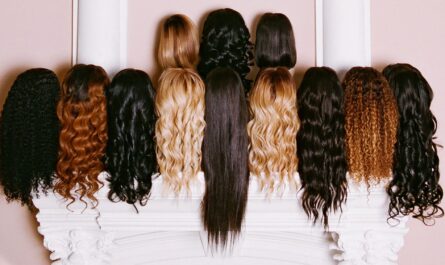The Luxury Upholstery Fabric has seen significant growth in the past few years driven by rapid urbanization and rising disposable incomes around the world. With more people aspiring for luxury furnishings and home décor items, the demand for luxury upholstery fabrics has increased manifold. In this article, we analyze the key trends shaping the luxury upholstery fabric and identify growth opportunities.
Emergence of New Material Options
Upholstery fabrics were traditionally made from materials like cotton, linen, wool and velvets. However, with advancements in material science and textile engineering, manufacturers are exploring new raw material options to develop upholstery fabrics with enhanced properties. Some of the new materials gaining popularity include bamboo rayon, Tencel, microfibers and polyester blends.
Bamboo rayon fabrics offer attributes like breathability, moisture-wicking and antibacterial properties. Tencel fabrics derived from eucalyptus trees are softer, more durable and provide moisture management. Microfiber fabrics give a very smooth handfeel and reduce pilling. Polyester blends have enhanced wrinkle and stain resistance. The availability of these new material options is allowing upholstery manufacturers to develop more functional and aesthetically appealing fabrics.
Trends in Pattern and Designs
Just like apparel fashions, upholstery fabric designs also follow trends. In the past few years, we have seen a rise in demand for richly textured, detailed and colorful patterns. Embroidered, brushstroke, damask and bloom patterns emulating nature are trending globally. Floral, paisley, animal prints and geometric designs are also very popular. Metallics, shiny materials and opulent brocades exuding luxury are being widely used in high-end upholstery fabrics.
Digital technology is enabling manufacturers to develop intricate patterns and designs more easily. 3D design software allows creating realistic floral and nature inspired motifs. Digital printing allows producing one-off custom designs on demand. Quick turnaround times are fueling mass-customization in the upholstery fabric.
Sustainability Focus
With growing environmental awareness, sustainability has become an important consideration for upholstery manufacturers as well as end consumers. There is increasing demand for eco-friendly fabrics made from organic, recycled or rapidly renewable materials. Some manufacturers have started using materials like organic cotton, bamboo, TENCEL Modal and wool. Traceability of raw materials and ethical production practices are other aspects scrutinized by consumers today.
Chemical finishing processes involving formaldehyde, aramid and PFC are being replaced by safer low-emission alternatives. Recycled polyester fabrics made from plastic water bottles are also gaining traction. Going forward, we expect the sustainability quotient to play a much bigger role in upholstery fabric selection. Manufacturers enhancing their sustainability credentials will have an edge in this evolvingplace.
High-performance and Dual-purpose fabrics
With consumers wanting multi-functional home textiles, upholstery fabric manufacturers are investing in product innovation. The demand for high-performance, dual-purpose fabrics that can be used for both upholstery and other applications is on the rise.
Some examples include contract grade and solution-dyed polyester fabrics that offer excellent stain, fade and abrasion resistance for heavy commercial use. Microvelvet and microsuede fabrics that feel soft like velvet or suede but are durable and easy to clean. Outdoor performance fabrics repelling water, dirt and UV rays. Ultraleather or pleather substitutes replicating leather’s luxurious look without environmental impact.
Stretch microfibers expanding furniture dimensions for versatility. Photography reactive fabrics changing colors in response to light for interactive spaces. Self-cleaning, anti-microbial treated fabrics staying fresher for longer. Such high-tech multi-purpose fabrics allowing flexibility in design will become more mainstream.
Developing Economies Boosting Demand
Emerging economies in Asia Pacific and Latin America are displaying strong growth in luxury home furnishing sectors backed by urbanization and expanding middle-class populations. India, Indonesia, Vietnam, Mexico, Brazil etc. offer lucrative opportunities for upholstery fabric suppliers. Local manufacturing is rising to cater to these developings and benefit from lower costs.
On the other hand, replacement demand from developed economies in North America and Europe continues to boost consumption levels. Additionally, the luxe home décor is also proliferating in China, GCC and other affluent regions. Thus, overall demand for luxury upholstery fabrics is projected to increase steadily in the coming years across multiple geographies and consumer segments.
In conclusion, the luxury upholstery fabric is thriving with innovative product developments, focus on new sustainable solutions, diversification into dual-purpose applications as well as multi-regional consumer demand gains. Technological interventions, customized digitally-printed designs and expansion into high-growth emerging economies will likely sustain this positive momentum. Manufacturers adapting to changing consumer preferences and trends proactively have excellent opportunities for business success in the future.
*Note:
1. Source: CoherentMI, Public sources, Desk research
2. We have leveraged AI tools to mine information and compile it




